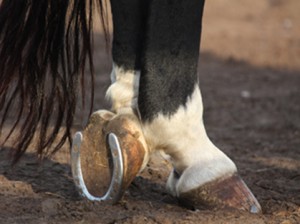Solving the Laminitis Mystery…
Australian Veterinary Association
Anyone with a horse or pony suffering from laminitis (a foot and hoof problem) knows how painful and debilitating it can be. It’s one of the most common reasons a horse requires veterinary treatment. But there are new discoveries unravelling the mysteries around what triggers the disease.
Professor Andy Durham of Liphook Equine Hospital and visiting professor at the new University of Surrey School of Veterinary Medicine in the United Kingdom will present the latest research on this concerning and complex disease at the Equine Veterinarians Australia (EVA) Bain Fallon conference on the Gold Coast, 13-17 July.
Professor Durham said that metabolic syndrome, a problem that includes insulin resistance, has progressed into the greatest threat to human health in the developed world and is a consequence of readily available high calorie food and drink containing refined sugars, alongside a more sedentary lifestyle.
“It should come as no surprise that this same concept applies to horses and is referred to as equine metabolic syndrome (EMS). The major consequence of EMS in horses is laminitis, a metabolic condition that affects the whole body but is expressed in the feet of a horse,” he said.
“Over the last few years, our attitude towards the cause of laminitis has changed dramatically. We’ve always known that an older, overweight pony is more susceptible to the disease than a younger thoroughbred, and it was always thought that eating excessive amounts of lush grass, high in simple sugars, was the main culprit of laminitis.”
“However, recent research evaluating grass intake in grazing horses and ponies has put a different slant on this theory. There have been two studies undertaken in the last few years investigating the underlying causes of laminitis in a variety of horses. In both studies, around 90% of confirmed cases were associated with an underlying endocrine (hormonal) disorder, some presenting with Cushing’s disease (an overproduction of cortisol) and some with equine metabolic syndrome.”
“So, when horses and ponies with an underlying hormonal disease graze and ingest sugars (simple sugars, fructans, and starch) from the grass, this stimulates abnormally high levels of insulin. In normal horses, without an underlying hormonal disease, grazing pasture is unlikely to lead to insulin levels high enough to cause laminitis.”
Professor Durham said that while treatment is extremely important, lifestyle and dietary management is the key to reducing the incidence of the condition.
“The long term feeding of sugar and starch based feeds, particularly to overweight ponies and horses can lead to development of insulin resistance. So, proper nutrition, exercise, and weight management is important in preventing the disease,” he said.
EVA is a special interest group of the Australian Veterinary Association. Bain Fallon will be held at the RACV Royal Pines Resort, Gold Coast, July 13-17.
For more information visit www.ava.com.au/equine.











